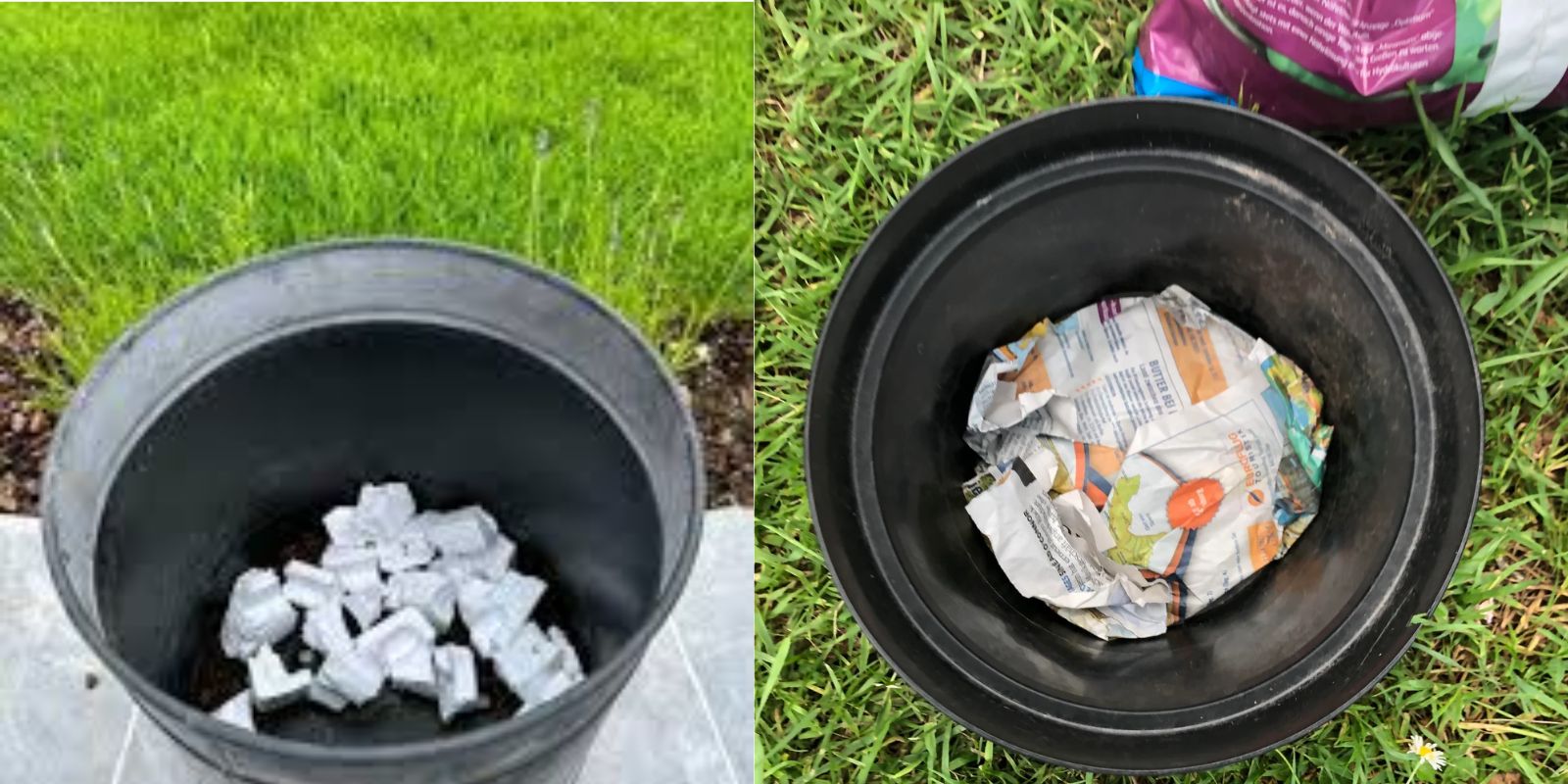For years, a common gardening practice has been to add Styrofoam (polystyrene foam) at the bottom of plant pots to improve drainage and make containers lighter. While this method might seem practical and cost-effective, it’s a myth that can have harmful consequences for your plants and the environment.
In this article, we’ll explore why Styrofoam in plant pots is not only ineffective but also potentially damaging. We’ll also provide better, eco-friendly alternatives for container gardening. By the end, you’ll understand why this outdated practice needs to be left behind and how to make better choices for your garden.
The Origins of the Styrofoam Myth
The use of Styrofoam in plant pots likely began as a way to recycle packing materials and reduce the weight of large containers. The logic was simple:
- It creates a lighter base compared to heavy materials like gravel.
- It supposedly improves drainage by preventing water from pooling at the bottom of pots.
While these ideas might sound reasonable, they don’t hold up under scrutiny. Instead, this practice can create a host of problems for both plants and the environment.
Why Styrofoam Should Never Be Used in Plant Pots
Here are the key reasons why using Styrofoam in plant pots is a bad idea:
1. It Disrupts Proper Drainage
Contrary to popular belief, adding Styrofoam to pots does not improve drainage. Here’s why:
- When you add a layer of Styrofoam or any non-porous material, it creates a “perched water table,” a zone where water collects above the Styrofoam layer instead of draining out.
- This can lead to waterlogged soil, suffocating plant roots and increasing the risk of root rot.
2. Risk of Chemical Leaching
Styrofoam is made from polystyrene, which can break down over time and release harmful chemicals into the soil. These chemicals can potentially affect the health of your plants and may even contaminate edible crops grown in Styrofoam-laden pots.
3. Environmental Impact
Styrofoam is one of the most environmentally unfriendly materials:
- Non-Biodegradable: It can take hundreds, if not thousands, of years to decompose.
- Microplastics: As Styrofoam degrades, it breaks into tiny particles that can pollute soil and waterways, harming wildlife.
- Recycling Challenges: Most local recycling programs do not accept Styrofoam due to its low recyclability.
4. Limited Effectiveness Over Time
Even if Styrofoam initially creates space for drainage, it compresses over time under the weight of soil and water. This reduces its effectiveness and can exacerbate drainage problems.
Better Alternatives to Styrofoam for Plant Pots
There are plenty of eco-friendly and effective options for improving drainage and reducing the weight of your plant pots. Here are some of the best alternatives:
1. Gravel or Small Rocks
Adding a layer of gravel or small rocks at the bottom of the pot is a traditional method that improves drainage. These materials allow excess water to flow through, preventing soil from sitting in water.
2. Broken Pottery or Ceramic Pieces
If you have old or broken ceramic pots, repurpose the shards as a drainage layer. They are durable, natural, and an excellent way to recycle materials.
3. Coconut Coir
Coconut coir is lightweight, eco-friendly, and helps improve soil aeration and drainage. Unlike Styrofoam, it also adds organic matter to the soil as it breaks down.
4. Perlite or Vermiculite
These lightweight, porous materials are often used in potting mixes to improve soil structure and drainage. They can also be added as a layer at the bottom of pots.
5. Organic Mulch or Compost
Using organic materials like mulch, bark, or compost can enhance drainage while also enriching the soil over time.
6. Upcycled Natural Materials
Get creative! Pine cones, wood chips, or even wine corks can be used as a base layer for drainage. They’re biodegradable and won’t harm your plants.
How to Ensure Proper Drainage Without Styrofoam
Good drainage is crucial for healthy plant growth, especially in containers. Follow these tips to keep your plants thriving:
1. Use Pots with Drainage Holes
Always choose pots with sufficient drainage holes at the bottom. Without these, water will accumulate, no matter what material you use as a base.
2. Select the Right Soil
Use well-draining potting soil, especially for plants prone to root rot. Avoid heavy garden soil, which compacts easily and retains excess water.
3. Elevate Your Pots
Placing pots on pot feet or small bricks ensures water doesn’t collect at the base and allows for better airflow.
4. Water Wisely
Avoid overwatering your plants. Only water when the top inch of soil feels dry, and adjust based on the plant’s needs.
5. Monitor Your Plants
Check the health of your plants regularly. Yellowing leaves or a soggy pot are signs of poor drainage and overwatering.
The Bigger Picture: Sustainability in Gardening
Gardening should be as eco-friendly as possible, and eliminating Styrofoam from your plant pots is a small but significant step toward sustainability. By choosing biodegradable and recyclable materials, you can:
- Reduce plastic waste.
- Protect your plants from potential toxins.
- Inspire others to adopt greener gardening practices.
Conclusion
The idea that Styrofoam improves drainage in plant pots is a gardening myth that needs to be retired. Not only does it fail to help your plants, but it also contributes to environmental harm. By switching to eco-friendly alternatives like gravel, coconut coir, or broken pottery, you can create healthier conditions for your plants while protecting the planet.
What do you use for better drainage in your pots? Share your eco-friendly tips and ideas in the comments below. Let’s grow green together! 🌱💚
#SustainableGardening #GardeningTips #EcoFriendlyLiving #PlantCare #SayNoToStyrofoam

